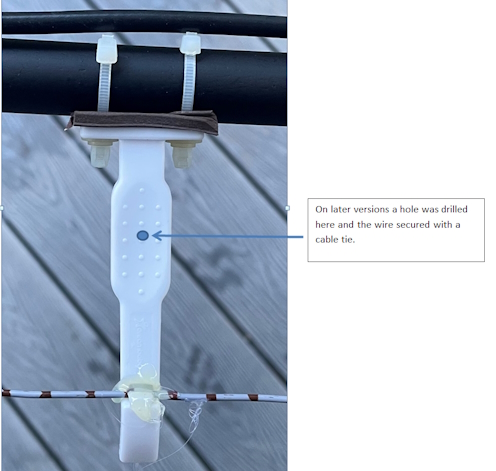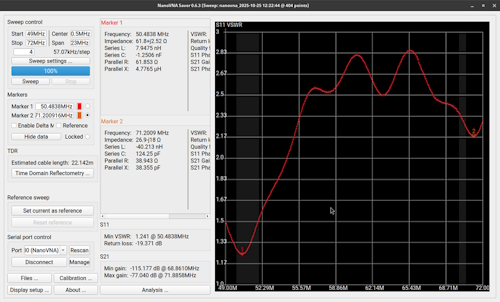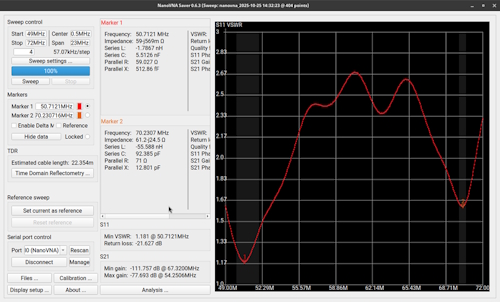Home.
October 2025 - Dual Band vertical Antenna for 4 Metres and 6 Metres
With Spiderbeam and DX Commander as examples, we have been using quality telescopic poles for quite a while to support antennas – but these come at a price and so the alternative has been inferior telescopic fishing poles. Tthese are fine for their intended purpose - but not so much for heavy work and the flimsy thin end sections often have to be discarded.
Until recently that is, as fibreglass telescopic poles are now readily available for supporting flags and such and they do not have thin end sections. Still not DXCommander quality - but definately better than those fishing poles.
Local hams around Chepstow have had great success with a brand called “Wind Jammer” and I was inspired to dip my RF toes into the 6 Metre band for the first time.
The antenna that I made is a vertical dipole. Not the kind that has coax coming out at right angles in the middle, but what for some unearthly reason has been dubbed “a flower pot” antenna.
My inspiration came from an article by John Bishop VK2ZOI (SK). He describes the ‘Flowerpot’ antenna as an “end-feed, coaxial dipole antenna”. It is made (he says) using a single length of standard RG58 coaxial cable and has a resonant choke wound in the coax immediately below the lower element to provide RF isolation between the antenna and the feed line. The antenna is enclosed in a length of PVC pipe to protect it from the elements. (Mine wasn’t as you will see).
You can see John’s design here
https://vk2idl.com/index.php/6m-flowerpot-antenna/
All of the dimensions John provides assume that you can use the same size formers to wind the choke on that he did.
Instead, I used what was in my workshop.
Further research found a rather nice calculator:
https://nomonsuhendar.blogspot.com/2020/12/flower-pot-antenna-calculator.html
But first I needed a fibreglass flag pole and Amazon provided one at a good price.
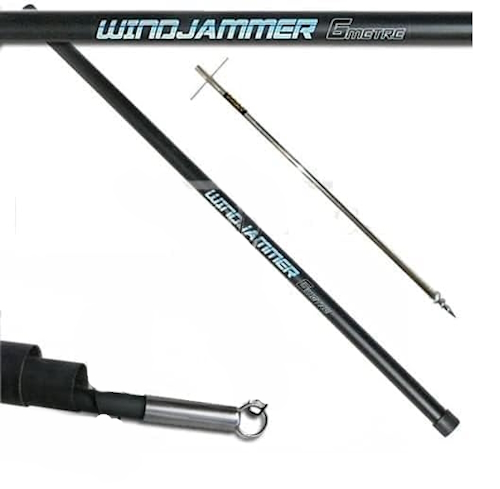
The photo above shows mine:
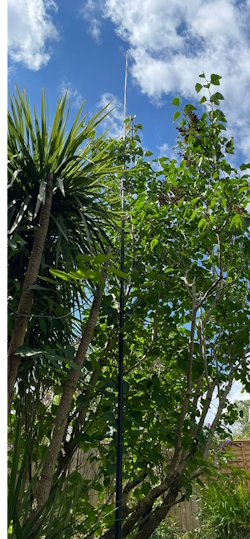
This is a tough 6 Metre long pole for just £26 delivered AND it came with a metal post intended to self support – and it has done so very well for 6 months. It can be seen that the top end of the pole is not thin at all.
The 6 Metre vertical dipole was easily constructed using John Bishop's instructions except that mine was simply taped to the pole. Using my NanoVNA it took relatively short time to make small adjustments to get the resonance in the middle of the 50 MHz band.
My best 6M DX so far is Slovenia using QRP.
That is where it could have ended – however recently I have developed an interest in another band which I have never operated on. That is the 70 MHz 4 Metre band.
I wondered whether I could “dual band” the existing 6M aerial.
My inspiration now was from a June 2023 Radcom (RSGB Login Required) article by John Hill G8HUY where he uses a more conventionally fed vertical dipole (in the centre) and he adds three more elements which are parasitic. They are not connected to the feeder at all. So that’s what I did with my “end-feed, coaxial dipole antenna”.
Using plastic workshop “C” clamps, I measured out a 2 Metre length of wire for 4 Metres (a half-wave length).
I positioned the wire various distances away from the driven element until I got good coupling and then adjusted the length to bring it into resonance.
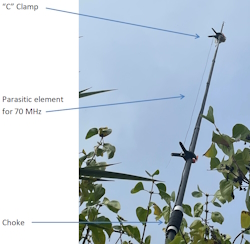
A NanoVNA scan showed that I was achieving a good match while not unduly affecting the 50 MHz SWR - but the resonance there had shifted a tad low in frequency.
I looked for and found an alternative to the “C” clamps.
These are safety door catches. Available for the low cost of £5.49 for 14.
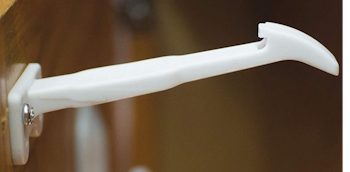
Below is the first fitting for the door “child safety catches” as spacers. They seem perfect for the purpose.
Unfortunately, at that stage, the distance between the driven element and the parasitic element was too great. There was insufficient coupling and the 4M SWR was too high and it was also resonating a little high. The 6M resonance and SWR is acceptable.
By reducing the distance to around 2.5cms the match was better but the 6M resonance dropped a little low. By removing around 2cms from the top of the 6M element and lengthening the 4M element about the same, I arrived at this scan…
Perhaps, with another round of reducing the distance and adjusting the element lengths I could improve the 4M match, but for now, I will evaluate how it all works in practice.
Some view of the antenna during construction.
Bungee cord, or what DX Commander calls “shock cord”, keeps the wire tensioned.
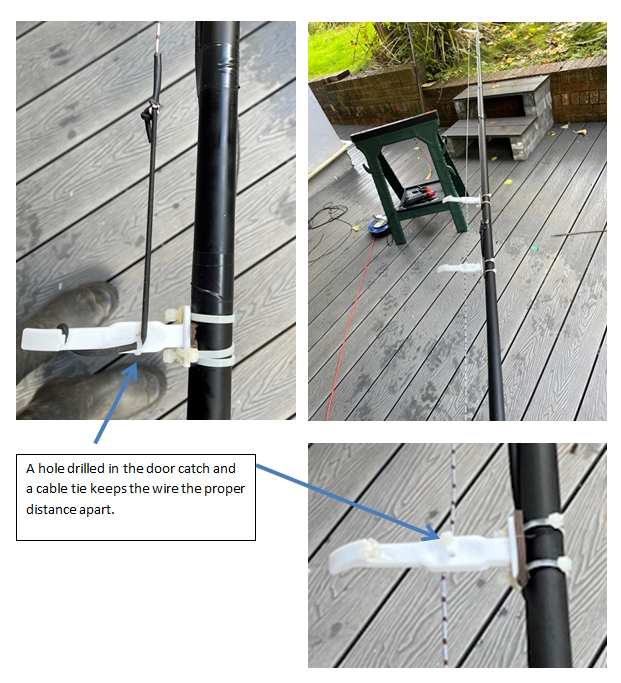
Update 11th November 2025
I chanced across the website of the Shirehampton Radio Club. I found a similar home brew idea by Robin Thompson G3TKF / Clive Maby G4NAQ.
https://shirehampton-arc.org.uk/g3tkf-g4naq-dipole-choke-balun-for-50-70mhz/
This is a rather elegant rotary dipole for both 4m and 6m and was in turn inspired by an Aril 2016 article by Dave G4NKT.
